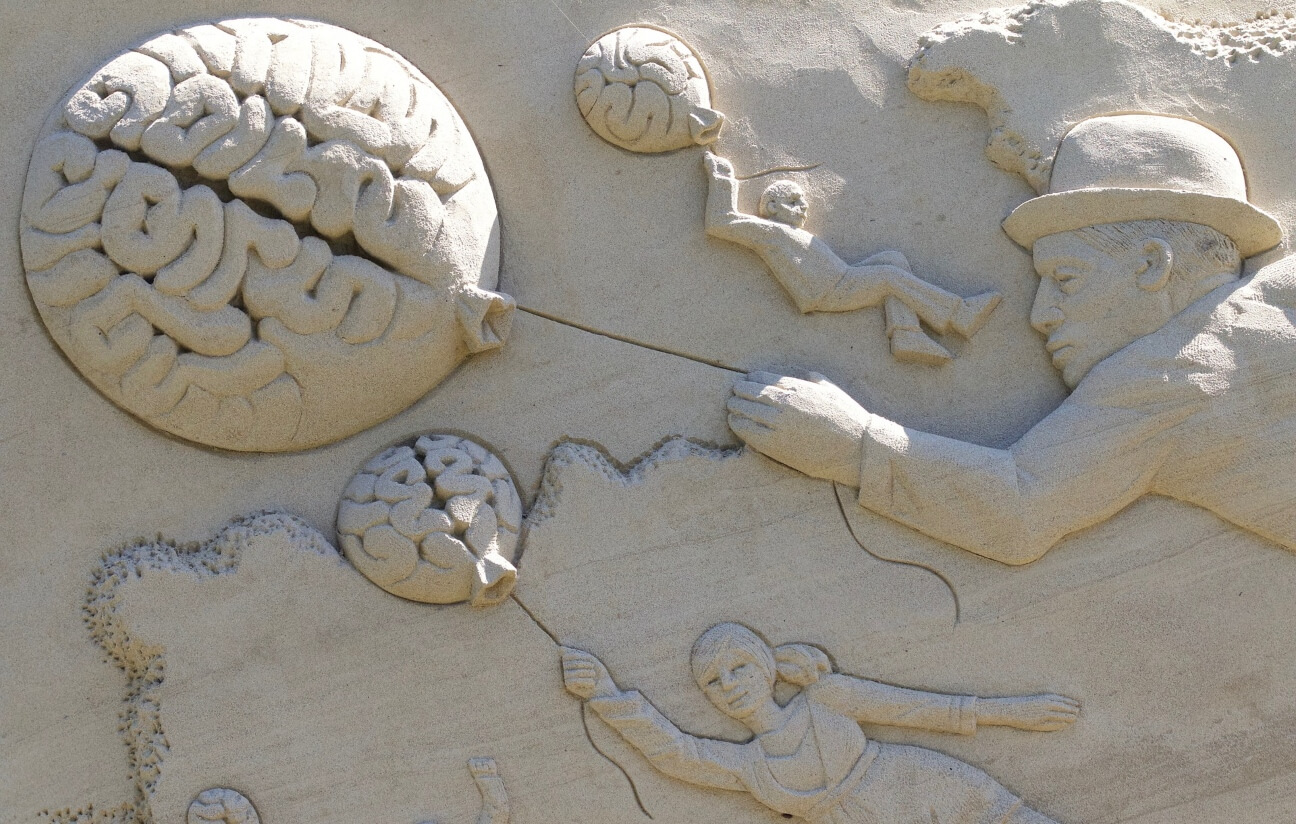Collaboration is cool.
And collaborative intelligence, a cocktail of the two, is knowledge nirvana.
So it’s cool too. That’s why we’re here to tell you what collaborative intelligence is, why you should foster it and how to apply it in your company.
Uff…
Too many things, right?
C’mon! Let’s get to it, we’ve got work to do.
What is collaborative intelligence?
Well, it doesn’t work here.
If a brain stores the knowledge and experiences of a lifetime, imagine what it is stored in several of them.
And think about how you can take advantage of it by combining them to work towards a common goal.
With the knowledge and experience of each one of them. With their different visions and their own ways of working.
Sharing all that information to bring new knowledge and enrich with other points of view the rest of the team.
An explosion of wisdom and learning.

Cooperation during the problem-solving process to find the most innovative solution.
And the digital environment is the ideal environment to apply it.
What is NOT collaborative intelligence?: collective intelligence
The difference is that these people do not interact with each other.
Each one contributes with his or her portion of knowledge, without the nuances, enrichment and point of view of the other participants.
The result is a sum of knowledge, yes, but with no connection between the contributors.
Types of collaborative intelligence
Depending on the type of project and the work methodology, we can propose different modes to collaborate.
1. Fusion mode
The contributions of all the people involved are collected in a single document in which the contribution of each one is not distinguished.
If you want an example, let us tell you that there is one that you surely know very well.
How many times have you consulted Wikipedia?
Well, it is a clear case of collaborative intelligence in fusion mode in which anyone can contribute their grain of sand to a general knowledge.
2. Molecular mode
Not necessarily.
You can present the contribution of each participant individually. In a book, for example.
If the whole project team includes its particular vision on the same topic, even if it is separately, we would also be talking about collaborative intelligence, although, in this case, in molecular mode.
Each team member would enrich the joint project with his or her own chapter or section.
3. Collection mode
Not at all.
Think big! Go into collection mode and share.

What do you mean, share?
Contribute to the collective knowledge with new content or enriching the content already circulating online.
4. Aggregator mode
The aggregator mode allows you to expand, qualify or discuss the content that is already available on the Internet.
Contribute your knowledge, your experience and your point of view to that created by others, by participating in forums or commenting on other people’s articles.
Benefits of collaborative intelligence
Why should you care? And, above all,why should you be interested in applying collaborative intelligence in your company?
1. It improves efficiency, productivity and performance
Yes, it is. It actually interests you a lot, because collaborative intelligence optimizes your team’s performance.
It optimizes it hugely.
Because it makes knowledge circulate among people. And that streamlines processes, optimizes time management and facilitates the work of the staff.
In other words: full productivity.
No time wasted or doubts to solve by asking other people who know what the thing is about.
Active involvement in the project means that everyone is clear about what they are working on and naturally assimilates the knowledge of other team members.
2. Increases participation and involvement
We’re cool and we know it, but when we can’t show it, we feel frustrated and discouraged.
But things change enormously when we are asked for our opinion: when we feel that we are valued and we work hard to give our best..
God-level involvement to move forward whatever we have in our hands, because personal and professional fulfillment comes with things like this.
3. Connects people, creates a team and a feeling of belonging
#that’sthat.
Without that connection, there is no team that works properly, because communication will not flow and cool personal relationships will not be created.
These are the ones that count when considering good vibes in a team.

When there seems to be a good vibe… but there is not.
Create a tribe and you will see how your team’s motivation and involvement (and your company’s results) will improve.
4. Triggers creativity and innovation
And, moreover, it is much easier for us to explain and show our vision when someone else has already done it before.
Collaborative intelligence is just that: sharing ideas and finding ways to improve them by taking into account points of view that make us think in a different way.

Creative mode ON.
5. Make the most out of knowledge
The sum of their separate knowledge alone would be reason enough to put them to work together on the same project.
But if, in addition, each one is capable of questioning or contributing something to the wisdom of the other, the result is a massive enrichment of knowledge.
How to apply collaborative intelligence in your organization
1. Set the challenge
Solve a problem, optimize a process, design a new project…
Whatever it is, you need to have it very clear before putting a group of thinking minds to work on it.

2. Form a team
And here’s where the team comes into play.
Choose people who are familiar with the problems and objectives of the project and who can contribute visions from different perspectives.
Diversity in your team brings new approaches to problems and raises possible solutions that otherwise no one would have considered.
In short: it triggers innovation and improves results.
3. Define the collaborative space and the tools you are going to use
If you do not create a meeting point to share the contributions of each person, we are not doing well.
How are you going to communicate and share your knowledge?
Choose the most appropriate tools and make sure that everyone knows how to use them, where to share their contributions and how to access those of the rest of the team.
4. Create a work dynamic
Because it’s just a waste of time.
Working in a team implies coordination. And, without a little bit of order then you should start forgetting about achieving your objectives: create a methodology that makes it clear what to do, how and when.
5. Write a final project report
Wrong.
Why is it important to do so?
To begin with, because it is a summary of all our work. It is the document that will serve as a guide and to which we can turn to solve doubts about the project.
Do not forget to include in it the problem statement, the work methodology, the contributions of each team member and the final conclusions.
And update the document after achieving your objectives, of course.
Collaborative intelligence is cool (and you know it). When will you apply it in your company?
If you have read this far, you must be interested in collaborative intelligence.
And since we want to make things easy for you, we have a proposal for you: do you know those tools we were talking about to manage the knowledge of your entire team?
Well, we have a very cool one so you don’t have to break your head over it.
And, the best part: it’s free!
Sign up for Zapiens and use our app to share your team’s knowledge.
Up to 20 people can register without paying a single euro. It’s on the house.
And yes: it’s forever.
Ready to rock with collaborative intelligence?
FREE for up to 20 users
The easiest way to train your team, manage knowledge in your company and learn something new every day.

